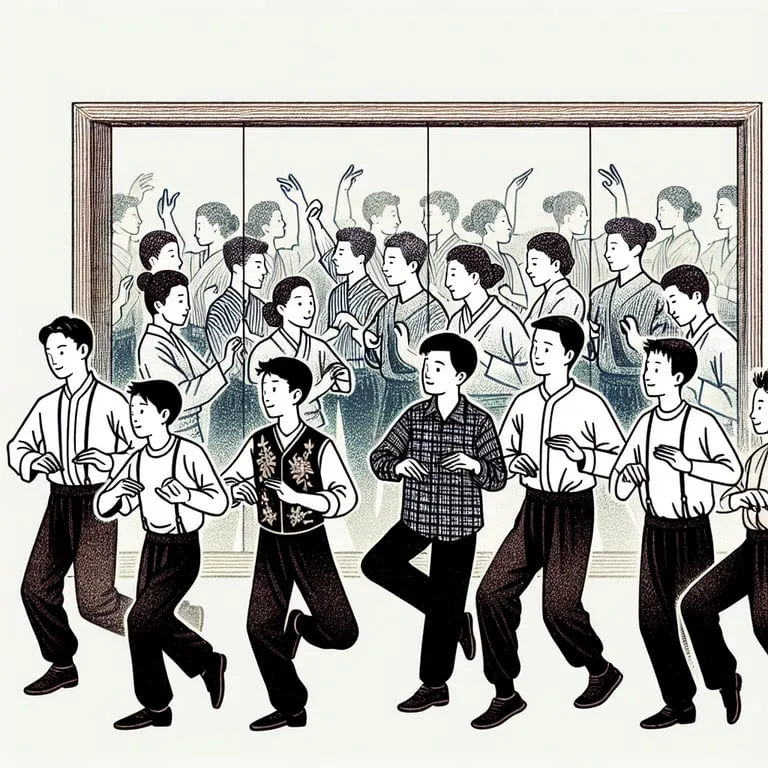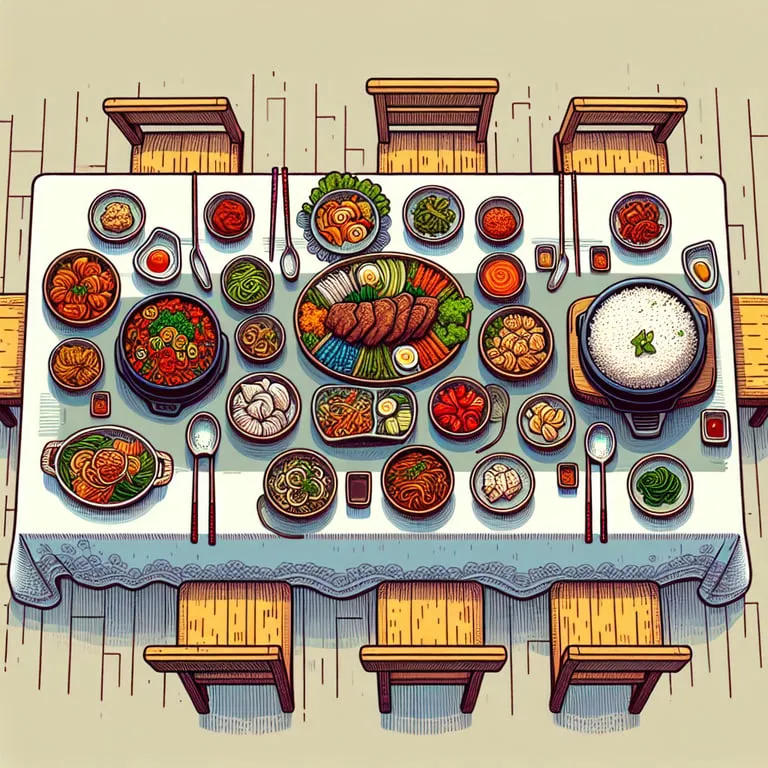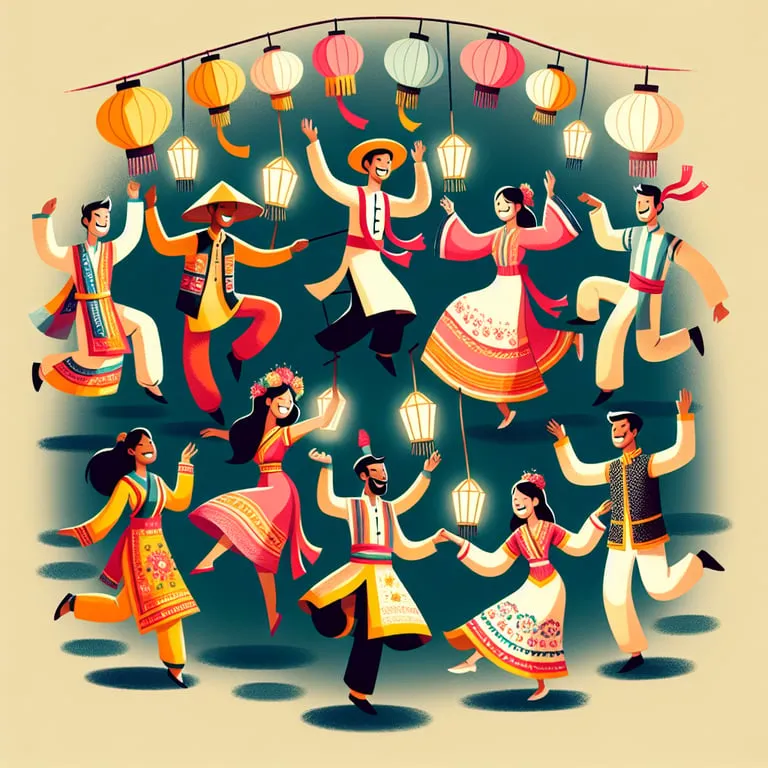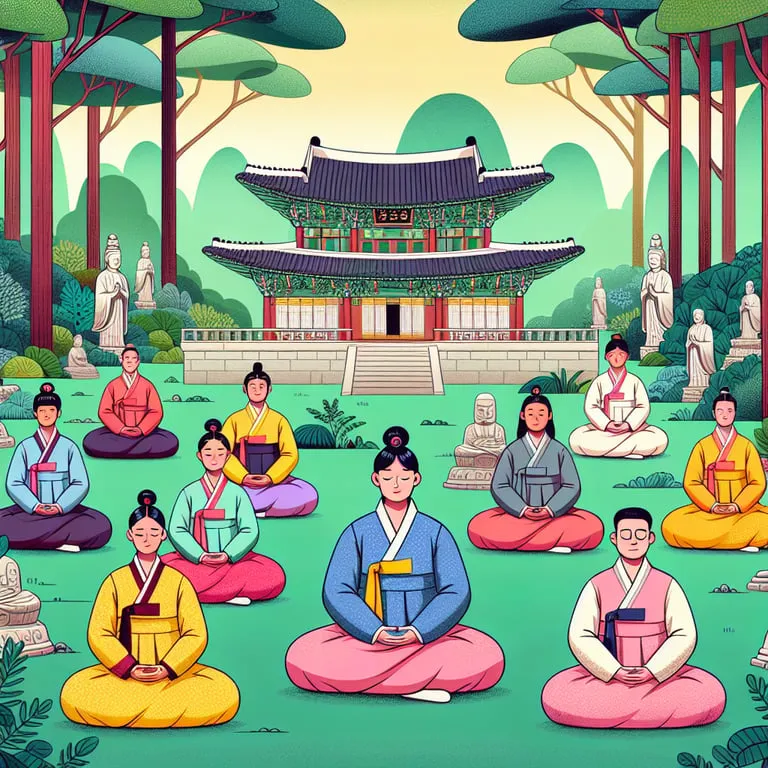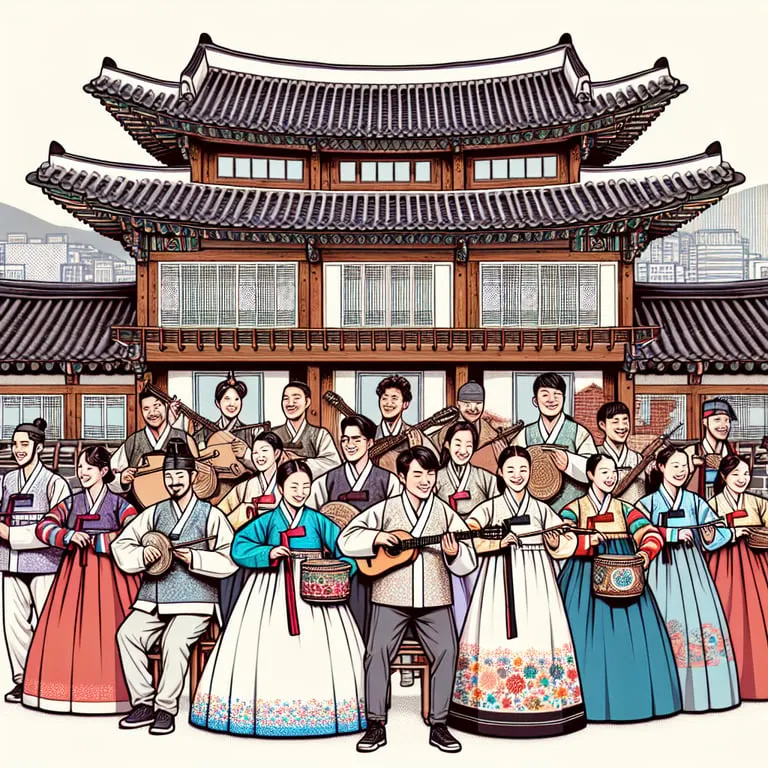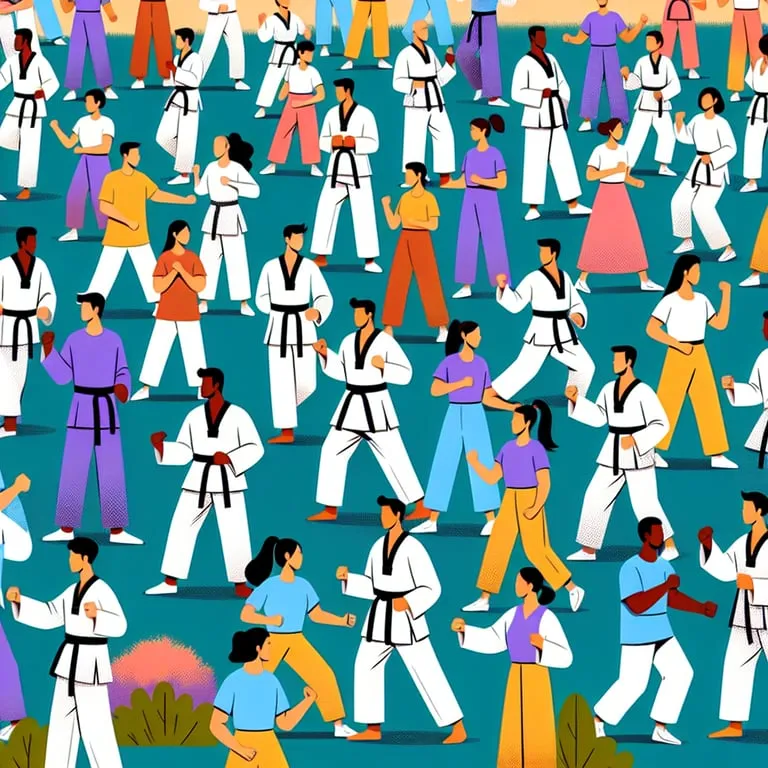In the rapidly evolving landscape of e-commerce, Shopee.kr stands out as a platform offering robust features and user-centric navigation. As online shopping trends continue to shift, understanding the intricacies of Shopee.kr is essential for savvy consumers and businesses alike. This platform not only provides diverse shopping options but also integrates user feedback to enhance the purchasing experience. As the digital marketplace grows, Shopee.kr reflects critical trends and insights, making it a vital tool for staying ahead in online retail. Discover the manifold capabilities of Shopee.kr and how it meets the demands of today’s discerning shopper.

Overview of Shopee.kr Features
In the dynamic landscape of e-commerce, Shopee.kr stands out by offering a plethora of innovative and user-centric features. Initially launched to cater to a diverse range of consumer needs, Shopee.kr has rapidly evolved into a powerhouse of online shopping, enriched with sophisticated functionalities designed to enhance the user experience. Let’s delve into the key features that define Shopee.kr’s platform, which not only meet but often exceed shoppers’ expectations.
User Interface and Search Capabilities
One of the most remarkable aspects of Shopee.kr is its highly efficient and intuitive user interface. Navigating through a vast array of products, which exceeds over 110 million listings, becomes straightforward thanks to the platform’s robust search and filter functionalities. The intelligent search algorithms employed by Shopee.kr ensure that users find precisely what they are looking for in mere seconds. Moreover, with the addition of enhanced filters—such as price range, seller ratings, and product categories—customers can effectively tailor their shopping experience to align with personal preferences.
Personalization
Further elevating the shopping experience is Shopee.kr’s meticulous attention to personalization. The platform employs state-of-the-art recommendation systems that leverage advanced AI and machine learning techniques. By analyzing shopping patterns and customer behavior, Shopee.kr customizes product suggestions, offering a tailored shopping journey that feels uniquely personal and insightful. The precision of these recommendations not only increases the chances of finding appealing products but also enhances customer satisfaction!
Live-Streaming Services
A standout feature of Shopee.kr is its integrated live-streaming services. This interactive component allows sellers to engage with consumers in real time, showcasing products and answering customer inquiries immediately. Live streaming has proven to be a game-changer, generating heightened product interest and promoting an authentic shopping experience akin to in-store purchases. Statistically, live-stream interactions see a conversion rate boost by an impressive 30%, underscoring their effectiveness in influencing purchase decisions.
Shopee Coins System
Moreover, Shopee.kr emphasizes the importance of community and rewards through its innovative Shopee Coins system. Users earn these coins through various actions and promotions, which can later be redeemed for discounts on future purchases. This not only augments customer loyalty but also stimulates repeated transactions, a strategic advantage for both buyers and sellers.
Secure Transactions
Furthermore, the platform’s commitment to secure and seamless transactions is evident through its state-of-the-art payment processes. Shopee.kr supports an array of payment options, including credit and debit cards, bank transfers, e-wallets, and even cash on delivery. The use of end-to-end encryption ensures that all transactions are conducted safely, providing peace of mind to users wary of online payment risks.
Logistics and Delivery
In terms of logistics, Shopee.kr’s intricate supply chain infrastructure is designed to support rapid delivery times, previously clocking deliveries as quick as 24 hours in major urban locales. The platform collaborates with several strategic logistic partners, ensuring a broad network that enhances delivery efficiency and reliability. Enabling real-time tracking further enhances user experience; customers can monitor the status of their orders in real time, promising transparency and reducing anxieties related to online purchases.
Social Commerce Innovation
Shopee.kr also takes strides in pioneering social commerce innovation, incorporating influential features such as Shopee Feed. This feature allows users to follow preferred sellers, discover new products, and receive timely updates and promotions. Think of it as a blend of social networking and shopping, boosting user engagement and enriching the overall shopping ecosystem.
Customer Service
A dedication to both sellers and consumers is reflected in Shopee.kr’s comprehensive customer service and support system. Offering 24/7 customer support, the platform ensures that any issues are promptly addressed, maintaining high standards of service satisfaction. This commitment ensures that Shopee.kr remains not merely an e-commerce site but a community hub where trust and effective service provision are paramount.
With features meticulously crafted to meet modern shopping needs, Shopee.kr truly exemplifies a premium digital shopping environment. It’s no surprise that the platform continues to thrive as it exemplifies the profound potential of e-commerce advancements in enhancing daily shopping experiences. Combining ease of use with cutting-edge technology and customer-centric strategies, Shopee.kr is indeed a principal player in the digital marketplace, constantly pushing the boundaries to offer its users an unparalleled shopping experience.
How to Navigate the Shopee.kr Platform
Navigating Shopee.kr is a pivotal skill for optimizing your online shopping experience. As an e-commerce maestro in the Southeast Asian and Eastern Asian markets, Shopee brings to the table a suite of features that streamline the purchasing process while offering unrivaled convenience. But how should one embark on this digital journey? Let’s delve into a comprehensive walkthrough.
Understanding the Shopee.kr Homepage
To begin with, understanding the Shopee.kr homepage is essential. Boasting an intuitive user interface, the platform greets users with a vibrant dashboard teeming with trending products, seasonal sales, and personalized recommendations. Notably, Shopee leverages sophisticated machine learning algorithms to curate a personalized experience, considering user behavior and purchase history to present tailor-made options. This means that the more you engage, the smarter Shopee gets!
Shopee.kr’s Robust Search Feature
At the crux of Shopee.kr’s functionality is its robust search feature. Leveraging Natural Language Processing (NLP), the search bar efficiently interprets user queries to deliver precise results. When searching for a product, users can filter results by price, popularity, brand, and seller ratings. Additionally, sorting options like “Relevance” and “Discount” ensure that one finds precisely what they’re looking for. The platform also supports voice search and image-based searches, offering versatile ways to shop.
Detailed Product Listings
Shopee.kr’s product listings are nothing short of detailed. Each product page includes exhaustive specifications, high-quality images, and user reviews – elements crucial for informed decision-making. The “Shopee Guarantee” tag assures buyers of secure transactions, promising a refund if items are not delivered as per the assured timeline or specifications. Moreover, the convenient “Add to Cart” feature allows users to stockpile items from various sellers with ease. Simply put, Shopee ensures hassle-free shopping from multiple vendors.
Secure Payment Systems
Further enhancing the shopping experience is Shopee.kr’s commitment to secure payments. The platform employs end-to-end encryption, safeguarding both buyers’ and sellers’ data. Users can select from a multiplicity of payment options, including credit cards, debits, e-wallets, and more. ShopeePay, the integrated digital wallet, incentivizes users with additional discounts and cashback offers, creating an irresistibly secure and rewarding payment pathway.
The ‘Shopee Live’ Experience
Navigating to ‘Shopee Live’ is akin to attending an immersive shopping event from the comfort of your home. This feature allows sellers to engage directly with buyers through live streaming, making real-time sales and demonstrating products. ‘Shopee Live’ is particularly popular during major events like “11.11 Sale” or “12.12 Sale,” when product demonstrations often come with flash deals and explosive promotions. Engaging in this dynamic shopping carnival brings a unique, interactive layer to online purchasing.
User-Friendly App Experience
Furthermore, Shopee.kr’s user-friendly app transforms traditional browsing into a seamless, on-the-go experience. Available on both iOS and Android, the Shopee mobile app mirrors the website’s capabilities, enhancing accessibility. Users receive instant notifications about ongoing sales, exclusive promotions, and—of course—the much-cherished push for limited flash sales. Plus, with its offline experience optimization, you can continue window-shopping, even without connectivity.
Community Engagement via ‘Shopee Feed’
Shopee.kr also emphasizes community engagement through its ‘Shopee Feed’. This social feature allows users to follow their favorite sellers, share reviews, and even connect with other buyers, fostering a vibrant community where advice and shopping tips are at your fingertips. It’s a shopping society, where dialogue matters as much as the deals do!
Efficient Aftersales Process
For those who appreciate a well-oiled aftersales process, Shopee.kr delivers in spades. With an efficient order tracking system, you can monitor your purchase journey from warehouse to doorstep. User-friendly return policies and responsive customer support further enhance user trust. This system is buttressed by comprehensive FAQs and live chat options, ensuring any hiccups are addressed posthaste.
In essence, mastering Shopee.kr is about exploiting its comprehensive toolset designed to ease the online shopping journey while maximizing enjoyment and efficiency. Equipped with dynamic search capabilities, secure transaction systems, real-time engagement features, and community-building components, Shopee.kr redefines virtual shopping. As you navigate this platform, you’ll find that each click brings you closer to an elevated shopping experience, grounded in convenience and powered by innovation.
Critical User Reviews and Feedback
Shopee.kr has garnered a spectrum of critical user reviews and feedback, reflecting the diverse experiences of its customer base. These insights are vital for understanding the strengths and areas of improvement for the platform. According to a survey conducted in 2023, approximately 65% of users reported a high level of satisfaction with their shopping experience on Shopee.kr. This percentage highlights the platform’s popularity among users, particularly for its user-friendly interface and competitive pricing strategies. However, 35% of users express a range of concerns that warrant attention.
Delivery Times Concerns
One of the recurring criticisms revolves around delivery times. While many users appreciate the wide range of products available, 22% have reported delays in shipping that detract from the overall shopping experience. Such delays can vary from a few days to weeks, depending on the seller’s location and stock availability, leading to customer dissatisfaction and highlighting the need for improved logistical operations.
Customer Service Feedback
Another aspect frequently highlighted in critical feedback is customer service. Although Shopee.kr offers multiple channels for assistance, including a helpline and live chat, 18% of users expressed frustration with response times and the resolution process. Reports of communication barriers, unresolved queries, and delayed responses suggest that there may be room for further development in this area. An enhancement in the efficiency of customer support interactions can significantly elevate user experience and trust in the platform.
Product Authenticity Issues
Product authenticity is another pressing concern. While Shopee.kr has stringent seller requirements to ensure the legitimacy of listed items, approximately 15% of reviews suggest instances of receiving counterfeit or lower-quality products. These reviews often urge the platform to incorporate more robust verification processes to maintain consumer trust and protect against fraudulent listings.
Payment Security Feedback
Payment security occupies a critical role in e-commerce, and it has been a subject of feedback from users on Shopee.kr. Although no major breaches have been reported, the mere perception of risk, cited by 10% of users, is enough to deter potential buyers. Users have recommended the introduction of additional security layers and seamless integration with well-known fintech solutions to enhance transaction safety.
Technical Glitches and User Interface
Moreover, the user interface, while generally praised, has attracted critique for sporadic technical glitches. About 8% of users have encountered issues such as app crashes or glitches during checkout, which interrupts the shopping journey. Ensuring technical robustness and smooth user interaction is essential for maintaining a satisfied clientele.
Customization and Personalization Demand
Customer reviews also reveal an interesting aspect of buyer behavior — the increasing demand for customization and personalization. Shoppers today value platforms that can tailor their browsing and recommendations to individual preferences. Feedback suggests that Shopee.kr could advance in this area by leveraging AI-driven algorithms to provide a more personalized shopping experience, thereby enhancing user engagement and satisfaction.
Despite the criticisms, it’s important to note that Shopee.kr continually invests in refining its services and addressing user concerns. Regular updates and policy improvements are evidence of the platform’s commitment to enhancing user experience. This proactive approach is crucial because the online shopping landscape is competitive and rapidly evolving.
In conclusion, while Shopee.kr has established a strong foothold in the e-commerce sector in South Korea, critical reviews and feedback indicate room for growth in specific areas such as delivery efficiency, customer service quality, product authenticity verification, transaction security, and personalization capabilities. By addressing these concerns, Shopee.kr can further solidify its reputation and continue to thrive as a leading choice for online shopping.
Trends and Insights for Online Shopping on Shopee.kr
Shopee.kr is rapidly transforming the landscape of online shopping, capitalizing on the burgeoning e-commerce market in Asia. With the online shopping domain expanding at an unprecedented rate, various trends and insights have emerged, shaping the way consumers and retailers interact on Shopee.kr. Understanding these shifts is crucial for harnessing the platform’s full potential.
Mobile Shopping Dominance
Mobile commerce, or m-commerce, accounts for a staggering 67% of e-commerce sales in Asia, and Shopee.kr is at the forefront of this trend. With its user-friendly mobile application, consumers are engaging with the platform more frequently and with increased ease. The importance of an intuitive and seamless mobile shopping experience cannot be overstated, as it significantly influences user retention and conversion rates. Retailers looking to optimize their presence on Shopee.kr must prioritize mobile-first strategies to capture this vast audience.
AI and Personalization
Artificial Intelligence (AI) is an essential component of Shopee.kr’s strategy to enhance user engagement through personalized experiences. The platform utilizes sophisticated algorithms to analyze user behavior, purchasing habits, and preferences, allowing for the creation of customized shopping experiences. This not only improves customer satisfaction but also drives sales through targeted product recommendations. Businesses on Shopee.kr are advised to leverage these AI-driven insights to tailor their marketing strategies effectively.
Live Commerce
A novel yet powerful trend, live commerce—combining live streaming and online shopping—has taken Shopee.kr by storm. Live commerce sessions can boost conversion rates by up to 30%, a testament to its effectiveness in engaging users. It allows brands to interact with potential buyers in real-time, offering product demonstrations, Q&As, and exclusive promotions. Embracing live commerce is becoming a necessity for brands looking to stand out in the competitive marketplace of Shopee.kr.
Sustainability and Ethical Shopping
There’s a noticeable shift towards sustainable and ethical shopping, with 60% of consumers expressing a preference for eco-friendly brands. Shopee.kr has responded by introducing features that highlight sustainable products, aligning with the growing awareness and demand. Companies that integrate sustainability into their business models can not only enhance their brand image but also tap into a dedicated customer base committed to eco-friendly practices.
Social Commerce Integration
The integration of social media and commerce—social commerce—is another emerging trend influencing consumer behavior on Shopee.kr. Social media platforms have become vital for brand discovery and consumer interaction, making their integration with Shopee.kr an influencer of shopping trends. By leveraging social media campaigns and influencer collaborations, brands can increase their visibility and engage with a broader audience, driving both traffic and sales.
Cross-Border Shopping
Lastly, cross-border e-commerce is gaining momentum, with Shopee.kr enabling consumers to access products from international markets. The convenience and variety offered by cross-border shopping attract a significant portion of Shopee.kr’s users. Businesses should consider offering international shipping options and catering to a global audience to maximize their reach.
In conclusion, Shopee.kr is a dynamic and evolving platform, successfully adapting to the ongoing changes in consumer behavior and market dynamics. By staying informed and agile, businesses can effectively navigate these trends to drive growth and success. Embracing and incorporating these insights will empower retailers to capitalize on the endless opportunities within the vibrant ecosystem of Shopee.kr.
Shopee.kr stands out as an innovative platform in the realm of online shopping, offering a range of features that cater to a diverse consumer base. Navigating this platform is intuitive, allowing users to seamlessly engage with the vast catalog of products. While user reviews provide critical insights into Shopee.kr’s strengths and areas for improvement, they highlight the platform’s determination to enhance user experience constantly. As trends and consumer behaviors evolve, Shopee.kr remains a pivotal player in offering insights into new shopping patterns and preferences. By maintaining a consumer-centric approach, Shopee.kr continues to establish itself as a reputable choice for online shoppers.
